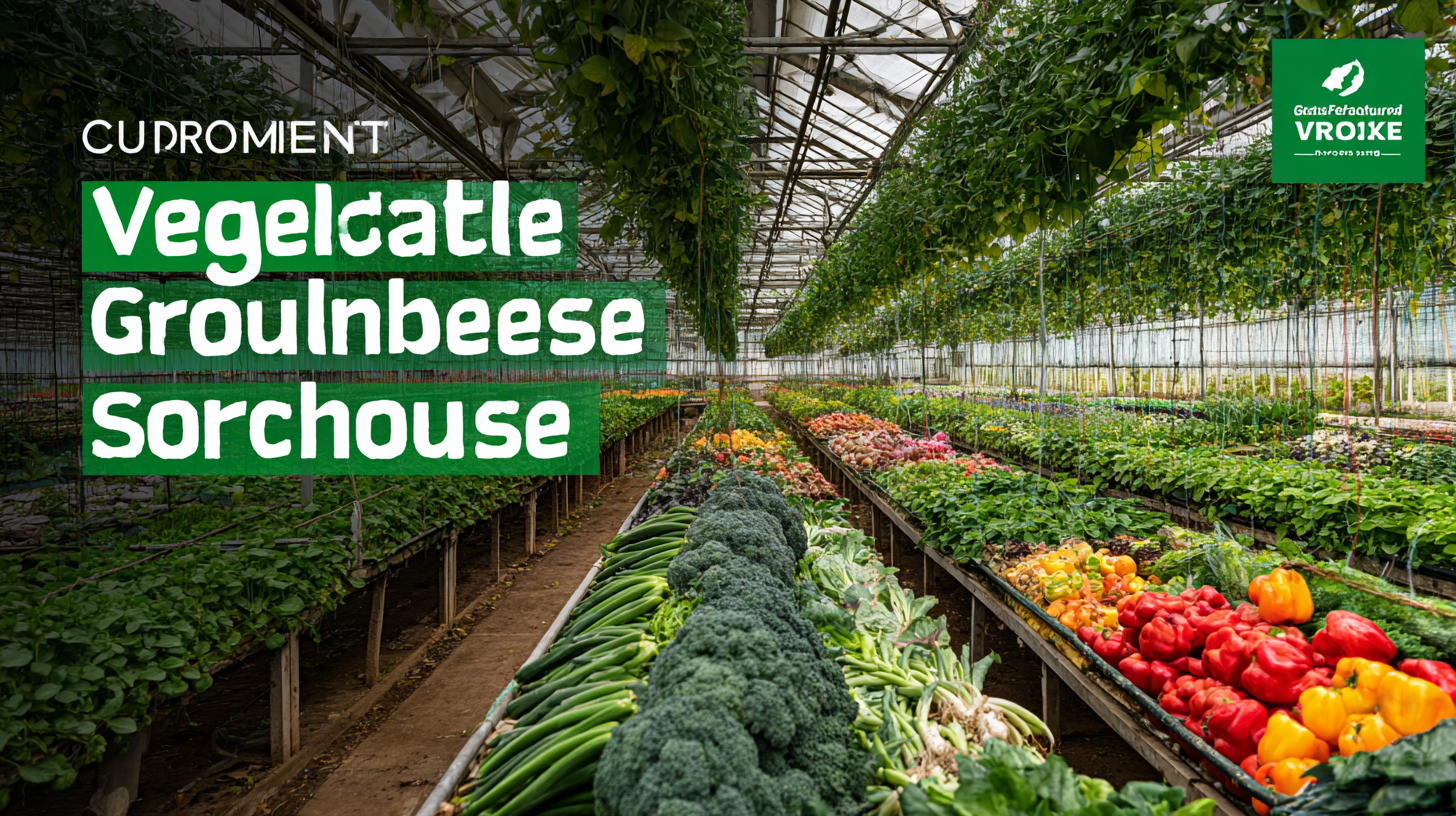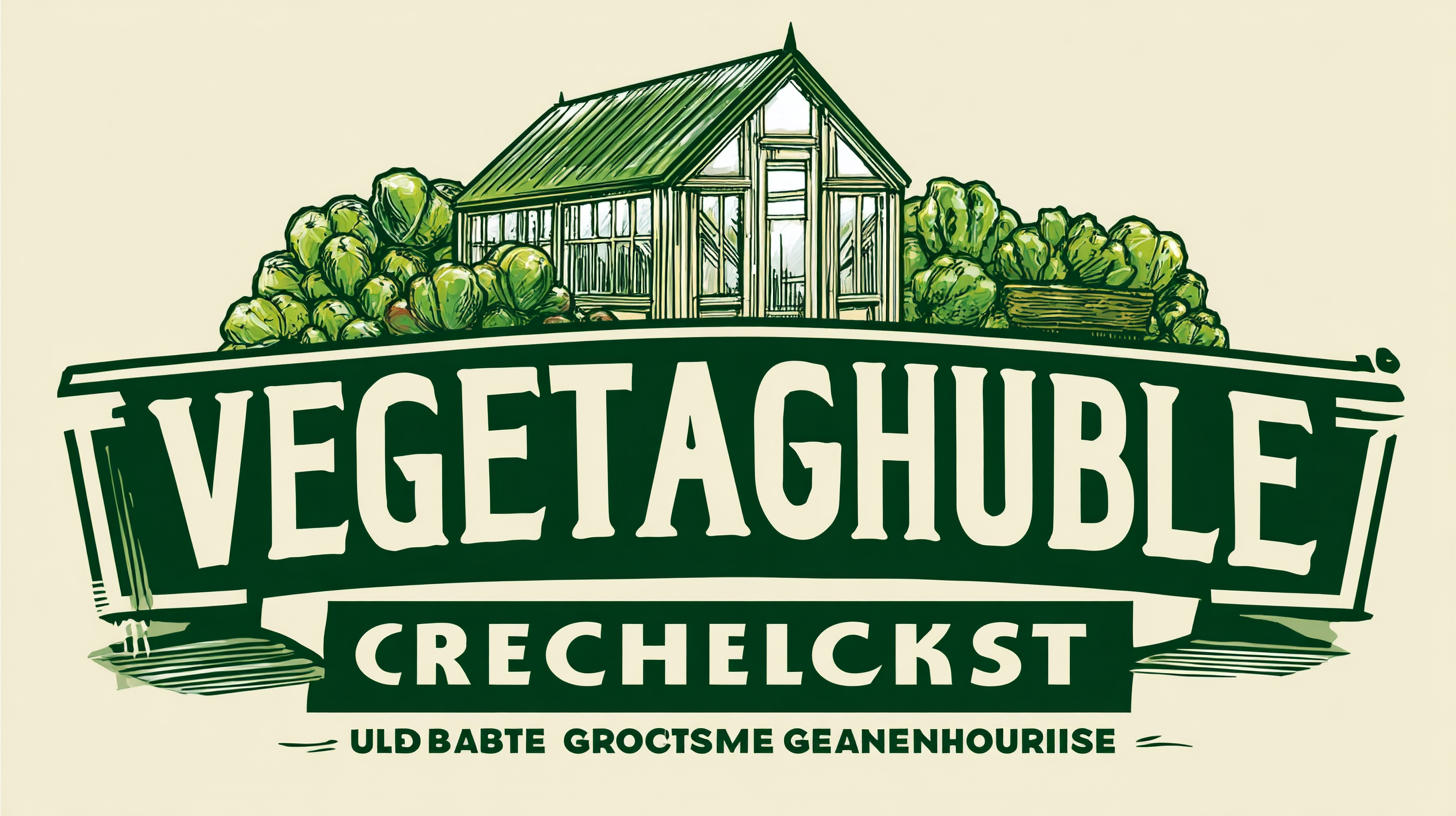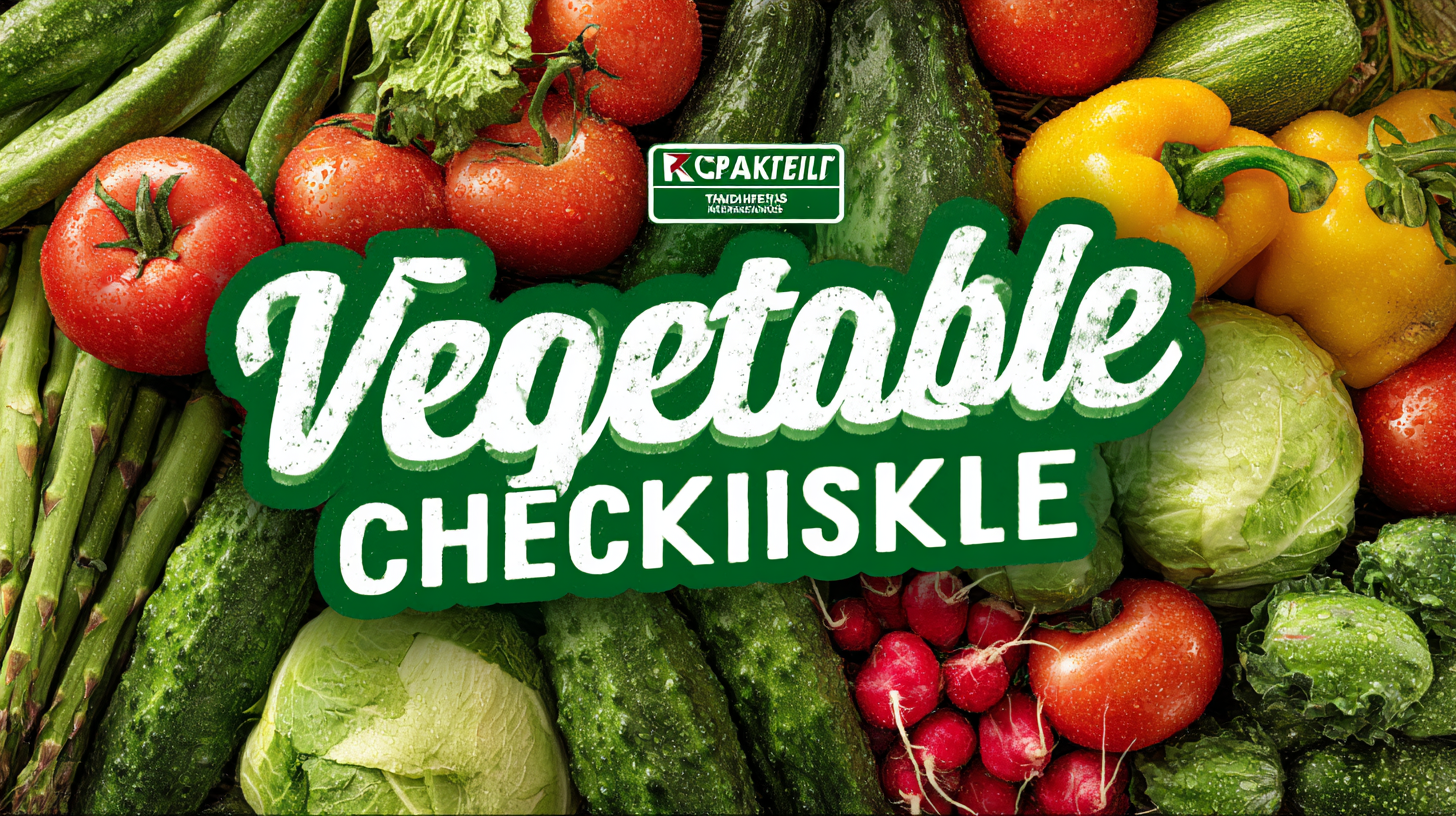
Ultimate Checklist for Sourcing the Best Vegetable Greenhouses: Key Specifications and Market Insights
When it comes to cultivating a thriving garden, the right Vegetable Greenhouse can make all the difference. Whether you're an experienced horticulturist or a novice gardener, understanding the key specifications and insights into the market can guide you in making informed decisions. This ultimate checklist is designed to help you navigate the myriad options available, ensuring that you select a greenhouse tailored to your specific needs. From dimensions and materials to ventilation systems and climate control, we’ll explore essential features that enhance plant growth and promote sustainability.

Additionally, we’ll delve into current market trends and innovations, empowering you to invest wisely in your gardening venture. Join us as we unpack the essentials of sourcing the best Vegetable Greenhouse to create your ideal growing environment.
Key Specifications to Consider When Sourcing Vegetable Greenhouses
When sourcing vegetable greenhouses, it's essential to consider key specifications that enhance sustainability and efficiency. One of the primary factors is the greenhouse's material. Selecting high-quality, durable materials not only extends the lifespan of the structure but also minimizes energy consumption, which is vital in reducing the carbon footprint associated with vegetable production. Additionally, look for designs that optimize natural light utilization and ventilation, which can significantly impact crop yields and energy costs.
In the context of the broader conversation on food production’s environmental impact, understanding the implications of your greenhouse choices on carbon emissions becomes increasingly important. Research suggests that while "eating local" has merit, the carbon footprint of what we consume may outweigh the benefits of where it comes from. Therefore, investing in vegetable greenhouses that prioritize sustainable practices can complement efforts to make our diets more eco-friendly. Consideration of these specifications will not only boost productivity but also align your sourcing practices with the growing demand for environmentally responsible food production methods.
Emerging Technologies Transforming Greenhouse Farming by 2025
The greenhouse farming sector is on the verge of a technological revolution, driven by innovations that promise to enhance productivity and sustainability. By 2025, emerging technologies such as automated climate control systems and advanced hydroponics are set to transform traditional greenhouse operations. These innovations facilitate real-time monitoring of environmental conditions, allowing growers to optimize factors like temperature, humidity, and light exposure with precision. Consequently, this leads to increased crop yields and reduced energy consumption, significantly impacting overall operational efficiency.
In addition to climate control, the integration of artificial intelligence and machine learning is expected to revolutionize decision-making in greenhouse farming. AI can analyze a wealth of data regarding plant health, soil conditions, and growth rates, providing actionable insights for farmers. Moreover, vertical farming techniques coupled with smart irrigation systems will maximize space utilization while minimizing water usage. As these technologies become more accessible, they will enable a new generation of greenhouse farmers to adopt more sustainable practices, ensuring food security and environmental stewardship in an era of changing climate.

Environmental Sustainability Practices in Greenhouse Design
When sourcing the best vegetable greenhouses, environmental sustainability should be at the forefront of your considerations. Today's consumers and producers alike are increasingly aware of the ecological impact of agricultural practices, and selecting a greenhouse designed with sustainability in mind can significantly influence both yield and marketability. Implementing energy-efficient technologies, such as solar panels and automated climate control systems, not only reduces reliance on non-renewable energy but also creates an optimal growth environment for vegetables throughout the year.
In addition to energy efficiency, the materials used in greenhouse construction play a crucial role in promoting sustainability. Opting for recycled or sustainably sourced materials can minimize the carbon footprint associated with building the greenhouse. Furthermore, incorporating features like rainwater harvesting systems can enhance water conservation, a critical aspect of agricultural sustainability. By addressing these environmental concerns in greenhouse design, growers can not only improve their operational efficiency but also contribute positively to the broader goal of sustainable agriculture.
Ultimate Checklist for Sourcing the Best Vegetable Greenhouses: Key Specifications and Market Insights - Environmental Sustainability Practices in Greenhouse Design
| Specification | Details | Environmental Sustainability Practices | Market Insights |
|---|---|---|---|
| Material | Polycarbonate, Glass, or Polyethylene | Use of recycled materials for structure | Increasing demand for durable materials |
| Size | Standard sizes from 10x20 ft to custom sizes | Maximize space efficiency | Growth in urban agriculture leads to smaller greenhouses |
| Ventilation | Natural and mechanical ventilation systems | Integration of passive ventilation designs | Shift towards green technologies in agriculture |
| Heating System | Electric, gas, or solar heating options | Solar panels to minimize energy consumption | Increasing preference for renewable energy sources |
| Water Management | Drip irrigation and rainwater harvesting systems | Focus on reducing water waste | Regulatory support for water conservation measures |
Exploring Alternative Greenhouse Solutions and Their Benefits
When exploring alternative greenhouse solutions, it’s essential to consider innovative designs that enhance efficiency and sustainability. According to a report from Grand View Research, the global greenhouse market is projected to reach USD 39.7 billion by 2025, driven by the increasing demand for fresh produce and the need for efficient farming practices. Vertical farming and hydroponic systems are gaining popularity as they maximize space and reduce water usage by up to 90% compared to traditional soil-based cultivation, making them an attractive option for urban environments.
Additionally, incorporating technologies such as polycarbonate panels and smart climate controls can significantly improve energy efficiency. A study by the National Renewable Energy Laboratory (NREL) indicates that using advanced materials can reduce heating costs by up to 50% in colder climates. Implementing such alternative greenhouse solutions not only supports sustainable agriculture but also caters to the shifting consumer preferences toward environmentally friendly practices, ensuring that growers can thrive in an increasingly competitive market.

Market Trends and Insights for the Future of Vegetable Greenhouses
The vegetable greenhouse market is witnessing significant transformations driven by innovation and changing agricultural practices. One of the most notable trends is the increasing adoption of smart greenhouse technologies. By integrating IoT (Internet of Things) devices and automated systems, growers can optimize environmental conditions, monitor plant health, and improve resource efficiency. This trend is not only enhancing crop yields but also promoting sustainable practices that are critical in today’s eco-conscious market.
In addition to technological advancements, consumer preferences are shifting towards organic and locally sourced produce, pushing the demand for specialized greenhouses capable of meeting these needs. As urban farming gains traction, small-scale, high-efficiency greenhouses are becoming more popular, allowing city dwellers and small farmers to cultivate fresh vegetables year-round. This evolution in market dynamics highlights the importance of robust greenhouse structures that cater to diverse growing methods and align with sustainability goals. As these trends continue to evolve, stakeholders in the vegetable greenhouse sector must stay informed to capitalize on emerging opportunities and position themselves effectively for the future.
Market Trends for Vegetable Greenhouses (2023)
This chart shows the projected market growth of vegetable greenhouses over the next five years, illustrating the increasing demand in various regions.
